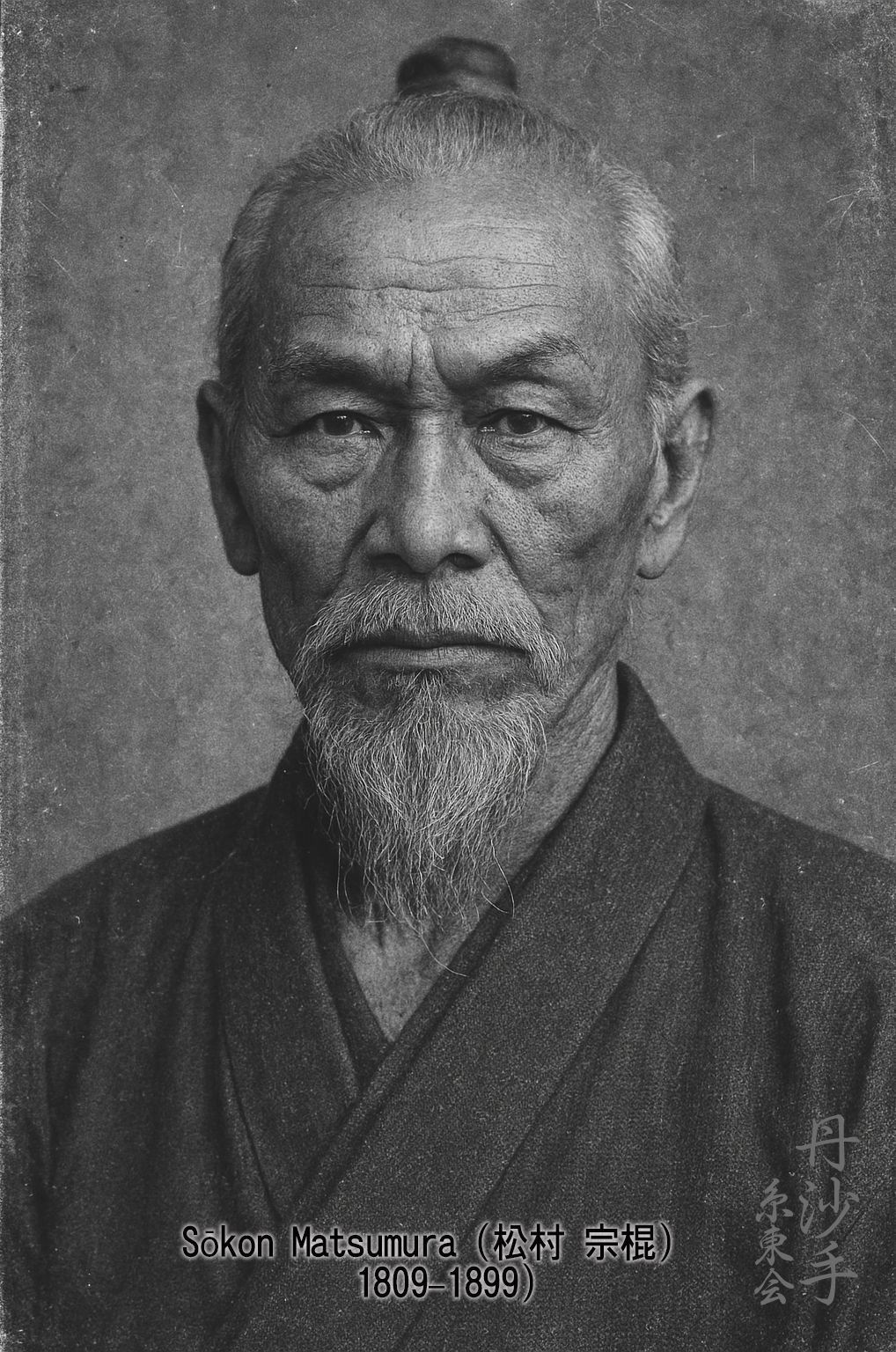Bushi Sōkon Matsumura (松村 宗棍, 1809–1899) was a legendary Okinawan martial artist and one of the most influential figures in the development of karate. Born in Shuri, Okinawa, Matsumura served as a warrior and bodyguard to the Ryukyu royal family under three successive kings: Shō Kō, Shō Iku, and Shō Tai. His exceptional skill in martial arts, strategic mind, and loyalty to the Ryukyuan court earned him the honorific title “Bushi,” meaning “warrior,” a rare distinction reflecting both martial prowess and noble character.
Matsumura was trained in the indigenous Okinawan martial art of Te (meaning “hand”), particularly Shuri-Te, and later studied Chinese boxing during official missions to Fuzhou and Satsuma. He synthesized techniques from Chinese martial arts, Japanese swordsmanship (Kenjutsu), and Okinawan Te to create a comprehensive and highly refined fighting system. Matsumura is credited with formalizing and preserving several classical kata, including Naihanchi, Passai, Chinto, and Gojushiho, which remain central to many modern karate styles.
As the chief martial arts instructor to the royal court, Matsumura taught a generation of future masters, most notably Itosu Ankō, who would go on to play a key role in the modernization and spread of karate in Okinawa and Japan. Matsumura’s approach emphasized discipline, efficiency, and spiritual cultivation — principles that continue to shape traditional karate practice today.
Matsumura passed away in 1899 at the age of 90, leaving behind a powerful legacy. He is widely regarded as a foundational figure in the lineage of styles such as Shōrin-ryū and Shitō-ryū. Through his teachings, philosophy, and enduring influence, Bushi Sōkon Matsumura helped transform Okinawan martial arts from secretive fighting systems into respected traditions of personal and cultural development.






